Revolutions often start with a shocking moment or a dramatic gesture, and when David Park backed his car up to the city dump in Berkeley, California, in 1950, maybe that's what he had in mind.
A onetime advocate of the new Abstract Expressionism that was redefining art in America, Park emptied his studio of every canvas he could find, filled his boot and the backseat and dumped the lot in landfill, where it was promptly covered over by bulldozers.

David Park's Two Bathers (1958)
The news that Park had turned his back on action, or free form, painting and done so in such a contemptuous manner was met with incredulity and unease on the East Coast, where the artists of the New York school were feted as stars and were both unwilling and uninterested in deviating from their path.
Park took other artists with him, but it had the effect of undermining the worthiness of West Coast Abstract Expressionism. They were seen as debunkers or only half-hearted exponents, despite the fact they were well progressed and in fact finished with the movement by the time it was getting into full swing on the East Coast.
Park, a lean man with an eagleish nose and a lived in demeanour, had grown disillusioned with abstract art after several years as an advocate and set out to champion a new movement based on figurative painting.
On the West Coast, where he belonged to a thriving artistic community that become loosely known as the San Francisco School, artists such as Clyfford Still had made and were making significant contributions to Abstract Expressionism but still operated in the shadow of their eastern counterparts. Others such as John Grillo were experimenting with action painting during the same period that Jackson Pollock was developing his drip paintings.
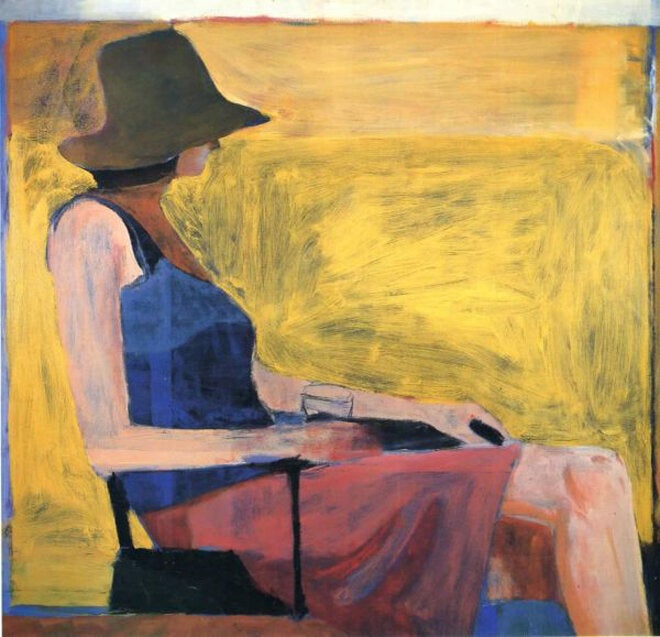
Richard Diebenkorn's Seated Figure with Hat (1967)
But artists associated with New York at the time read like a Who's Who? of 20th century modernism: Mark Rothko, Jackson Pollock, Barnett Newman, Arshile Gorky, Jasper Johns, Franz Kline, Louise Bourgeoise, Robert Motherwell, Claes Oldenburg, Willem de Kooning, Helen Frankenthaler, Robert Rauschenberg and Cy Twombly - to name a baker's dozen.
It was a powerhouse, a juggernaut of the art world, and the critics too embraced the new movement while dismissing other styles as provincial or old hat.
It's no easy task attempting to rewrite the history books, and skew accepted interpretations, but Thomas Williams' latest book seeks to redress some of the imbalance of perception of art in America at the time and highlight the contribution of West Coast artists both to Abstract Expressionism and the counter-movement they began.
While there have been other recent books on Park, including Nancy Boas' A Painter's Life (2012) and Helen Park Bigelow's David Park, Painter: Nothing Held Back (2009), Williams' The Bay Area School: Californian Artists from the 1940s, 1950s and 1960s widens the focus to cover in detail the many West Coast artists that influenced art in America during its most productive phase.
And he makes a damn good case for reevaluating the significance of their Abstract Expressionist works.
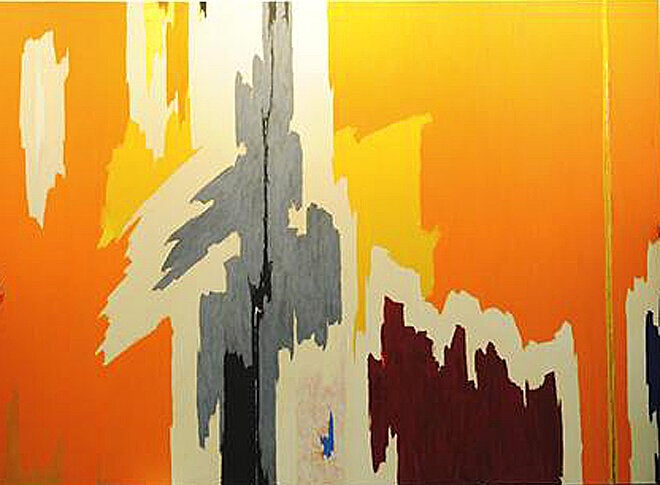
Clyfford Still's Plate 45, 1559 (1959)
The book, which has been released in conjunction with the recent exhibition at Williams' London gallery, argues that the 'Bay Area School' had been undervalued in the relentless drive to cement Abstract Expressionism as America's greatest art movement - and of it being New York-centric.
He may have a point, today Park's paintings sell for as much as £1.7million, but it's a far cry from the £47million paid for a Rothko last year.
Park, the very epitome of the artist as an angry young man, may not have quite achieved a revolution of thinking in American art, but his stand and his style influenced many others.
Despite the unfashionability of his stance he drew around him great artists such as Richard Diebenkorn, Elmer Bischoff and Frank Lobdell. Heavy-minded theoreticians they were intent on finding an art form with greater meaning.
The author comments: "Their lasting contribution was to expose the fundamental flaw in the notion that Action Painting could ever truly be an event that is separate from decision-making - the 'thousands of deliberate acts of choice and calculation' that the artist must employ of necessity.
"They strove to find a balance between their unconscious 'found' actions on the canvas and a purposeful direction towards the end result."
Williams also examines their thinking and contribution in relation to the period, in which the Beat poets were bringing fresh forms of expression to America's artistic communities.
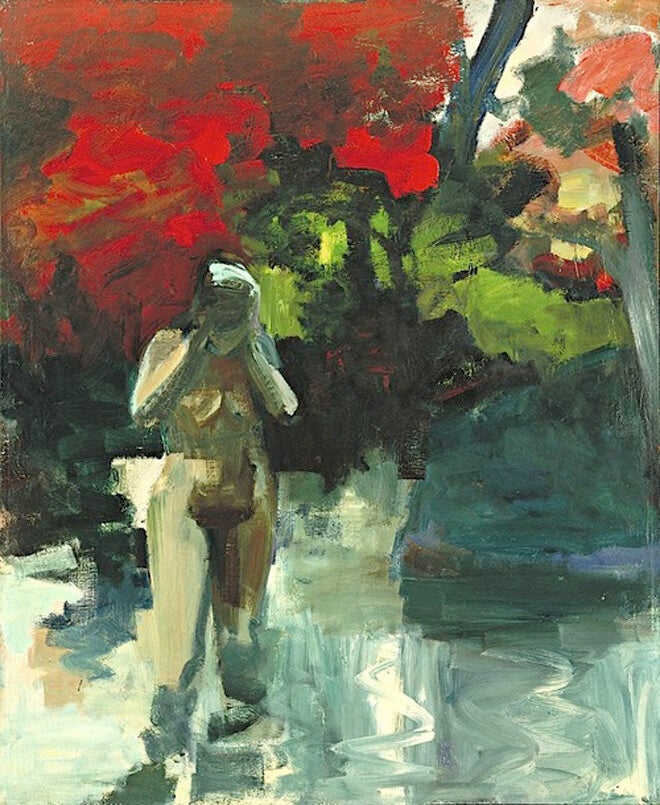
Elmer Bischoff's Girl Wading (1959)
He writes: "In the field of Abstract Expressionism, the San Francisco school was contemporary with and in some respects, in advance of any other school in America.. by keeping the construction of this new paradigm of art in New York and in New York alone the chief sponsors of the movement were able to control its historical place.
"The unique achievement of this school must now be allowed to take its place in the history of American art," Williams concludes.
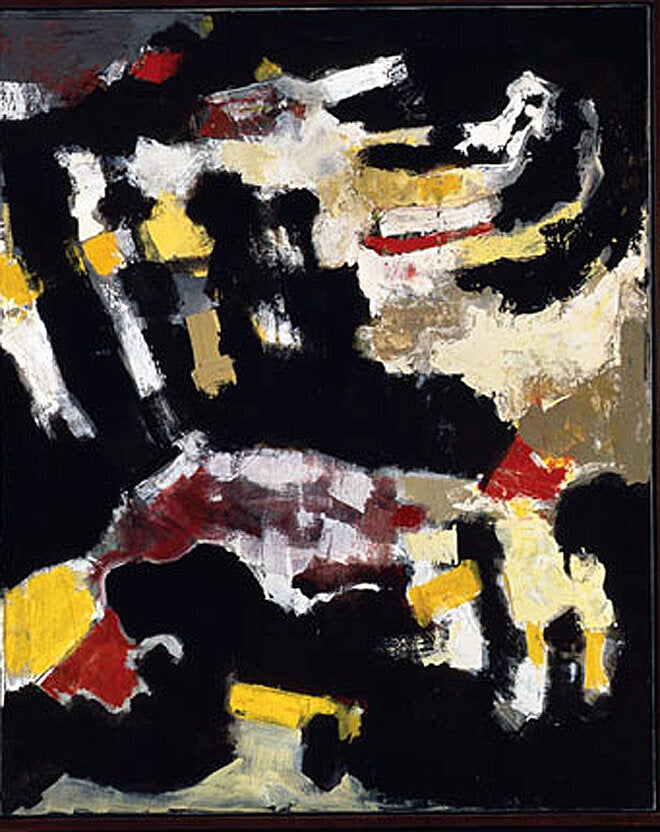
Frank Lobdell's 31 December 1948 (1948)
Park died prematurely at the age of 49, but his legacy, despite the impediments, continues to evolve and this book will further appreciation of his and his Californian compatriots' achievements.
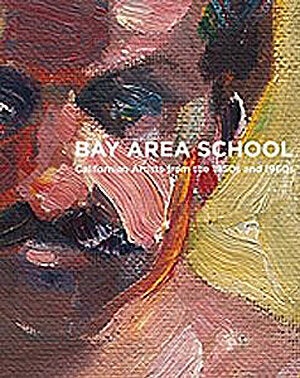
The Bay Area School - Californian Artists from the 1940s, 1950s and 1960s
By Thomas Williams
Hardback
Lund Humphries £35
